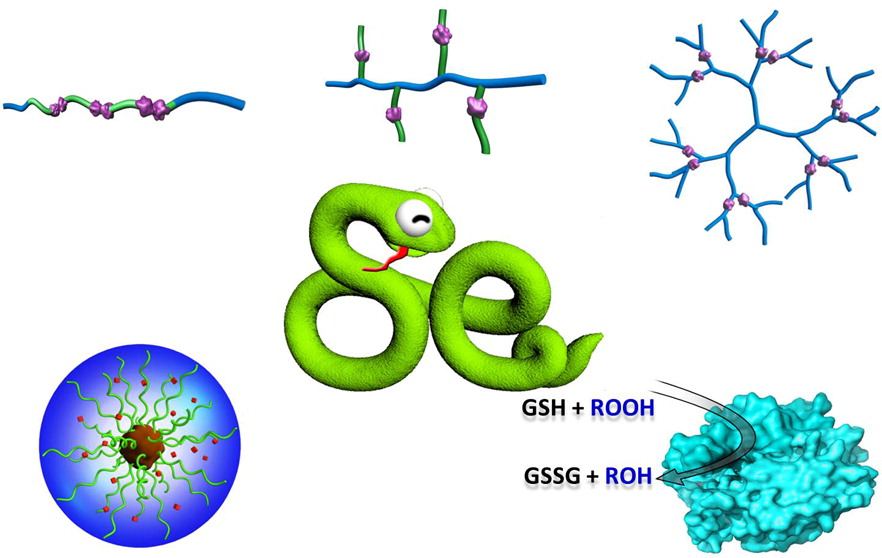Huaping Xu, Wei Cao, and Xi Zhang
Acc. Chem. Res., 2013, 46, 1647-1658.
Although researchers have made great progress in the development of responsive polymeric materials for controlled drug release or diagnostics over the last 10 years, therapeutic results still lag behind expectations. The development of special materials that respond to physiological relevant concentrations, typically within the micromolar or nanomolar concentration regime, remains challenging. Therefore, researchers continue to pursue new biomaterials with unique properties and that respond to mild biochemical signals or biomarkers.
Selenium is an essential element in human body with potential antioxidant properties. Because of selenium’s electronegativity and atomic radius, selenium-containing compounds exhibit unique bond energy (C–Se bond 244 kJ mol–1; Se–Se bond 172 kJ mol–1). These values give the C–Se or Se–Se covalent bonds dynamic character and make them responsive to mild stimuli. Therefore, selenium-containing polymers can disassemble in response to changes under physiological relevant conditions. This property makes them a promising biomaterial for controlled release of drugs or synthetic enzyme mimics.
Until recently, few researchers have looked at selenium-containing polymers as novel biomaterials. In this Account, we summarize our recent research on selenium-containing polymers and show their potential application as mild-responsive drug delivery vehicles and artificial enzymes. We begin by reviewing the current state of the art in the synthesis of selenium-containing main chain block copolymers. We highlight the dual redox and gamma-irradiation behaviors of diselenide-containing block copolymers assemblies, discussing the possibility of their use in a combination of chemotherapy and actinotherapy. We also describe the coordination of platinum with monoselenide containing block copolymers. Such structures offer the possibility of fabricating multidrug systems for cooperative chemotherapy. In addition, we summarize the methods for the covalent and noncovalent preparation of selenium-containing polymers with side chains, which highlight the opportunity to reversibly tune the amphiphilicity of selenium-containing polymers. Finally, we present strategies for the design of highly efficient selenium-containing dendritic polymers that can mimic enzymes. This field is still in its infancy period, and further research can only be limited by our imagination.

